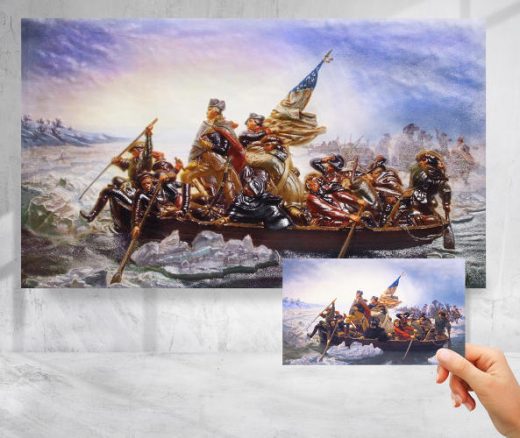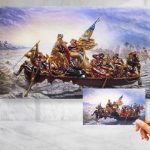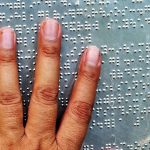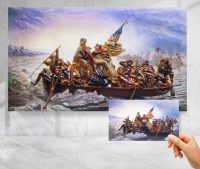3-D Technologies Help The Blind Experience Art More Fully
As you travel through the galleries of the Canadian Museum of Human Rights, you may notice visitors doing the unthinkable: touching the art.
While handling paintings and sculpture is usually forbidden, the Museum of Human Rights is currently hosting the first-ever exhibition of a specially developed collection of paintings made to be enjoyed by touch. The photographs and artwork were created by 3DPhotoworks using a proprietary technological process that builds three-dimensional artwork embedded with sensors that open up the wonders of art, regardless of the ability to see.
While sculpture can be appreciated by touch (with the approval of a museum’s curators), paintings, photography, and prints are harder to translate for the visually impaired. In this modern world, though, technology is expanding the way that the visually impaired can appreciate art.
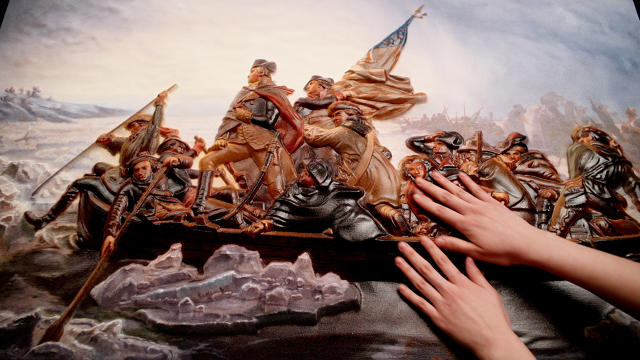
3DPhotoworks was cofounded by John Olsen, a former LIFE magazine war photographer, who started thinking about the impact images had on his life, which led him to think about a life without images. Eight years ago he started to research and develop a patent-pending, three-step printing process that allows blind people to more fully experience art and photography.
The process is not 3-D printing, per se. A computer program converts 2-D images to 3-D data, which is then sent to a machine that sculpts a bas relief of the image into a substrate that is 5-by-10 feet. They then print the digital image on top of the relief. “No one is doing what we’re doing,” says Olsen. “Our goal is to create a worldwide network of museums and institutions—now that the technology is available—where blind people can experience art and photography.” After a conversation with a tech adviser who is blind, Olsen decided to add embedded sensors into the works to transmit as much information as possible to the visually impaired “viewer.” There are three sensors embedded outside the art. One talks about the history, one talks about the artist, and one talks about the art itself. There are an additional 24 sensors embedded throughout the painting; when you get to a specific coordinate within the art, a sensor relays information like color or history that can help viewers form a better mental picture.
3DPhotoworks has applied the process to paintings like Vincent Van Gogh’s Dr. Gachet and Emanuel Leutze’s Washington Crossing the Delaware, which is the piece that Lynn Jackson came across at the National Federation for the Blind’s annual convention. Jackson lost her sight in 2011 after a stroke and was thrilled to be able to experience art again. Jackson, who can see shadows and shapes out of one eye, was able to recognize the picture with her hands. “The more I felt it, the more I realized that I had seen the painting before,” says Jackson. A title, written in Braille, confirmed for Jackson that it was the iconic image of George Washington triumphantly crossing the river. “It was really impressive. I was able to figure out what picture I was looking at,” says Jackson. “It was really exciting. It was like someone turning a light on in a dark room. It was wonderful.”
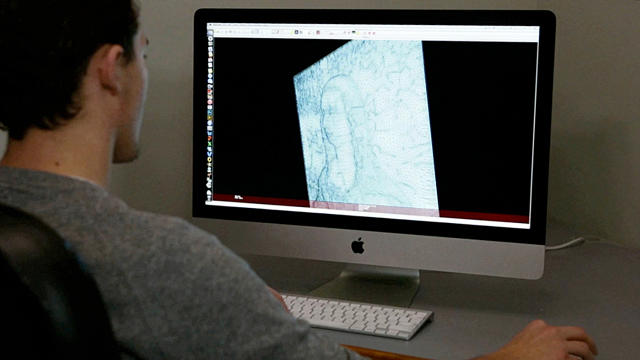
The ability to “see” with one’s hands—a concept generally known as sensory substitution—is fairly well proven at this point. Exploration of the phenomenon started in the ‘60s with the work of Paul Bach-y-Rita, a physician and engineer, who realized that stimulating one sense, such as touch, could take the place of another, such as sight. Developments in the field of sensory substitution have allowed a blind rock climber to use his tongue as an eye thanks to technology from a company called BrainPort. Their device sends electrical impulses to the brain by way of nerves in the tongue instead of the optic nerve. A head-mounted camera gathers pixels of information, which are then translated by a computer and sent to an array of electrodes attached to the tongue. It looks odd, but the results are astounding.
It’s a similar concept that lets Jackson “see” the image of George Washington with her hands. “It was great to sense the details and picture it in my own mind as I was feeling the painting,” says Jackson.
Capturing The Subtleties Of Art
Ed Bible was an avid photographer until he became blind at 11 years old. Bible, who works as the director of training and employment for the South Carolina Commission for the Blind, was thrilled when he came across the pieces created by 3DPhotoworks and was to be able to experience art firsthand again. He had grown frustrated with visual art programs that relied on the sighted to describe what was inside the frame. “They give you the Reader’s Digest version of a painting,” says Bible. “But when you have the chance to put your hands on an actual painting and you can feel the faces and the crevices on their faces, I can get my own interpretation of what it’s like without it being censored by someone else. I’m free to figure out what I think is important in the picture.”
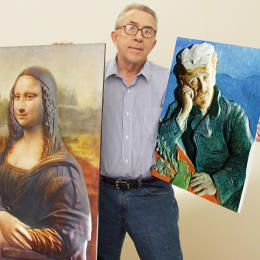
3DPhotoworks isn’t the only company trying to make art and museums more inclusive. A recent Indiegogo campaign by a Finnish group called Unseen Art sought funding to 3-D print classical paintings for the blind. They used a 3-D printer to create a sculptural version of Leonardo Da Vinci’s Mona Lisa, letting blind aficionados feel her enigmatic smile and interpret it as they wish. Mona Lisa is kind of cliché, which is why we wanted to do it first,” says Tommi Niskanen, one of the founders of Unseen Art. “We wanted to do something super iconic. Everyone should have the experience of that.”
“I’ve seen the Mona Lisa a million times,” says Jackson, who has since felt 3DPhotoworks’ own version of the iconic image. “But when you feel it, you really get a sense of her proportion of her hands, the length of her hair, the size of her face, you get a real sense of what the picture looks like.”
After seeing their take on the classical masterpiece, according to Niskanen, the Louvre—home to the original Mona Lisa—may host an exhibition of their 3-D printed works.

As for the technology, Niskanen admits that it’s still a work in progress. “We’re trying to get it as at low a cost as possible, and as quick and as best as possible,” he says. They are hoping to automate the process to make it easier to print the pieces, in the hopes of eventually creating an entire collection of 3-D printed art. “Our humble goal is that this will be a Google image search for the blind and visually impaired people,” says Niskanen.
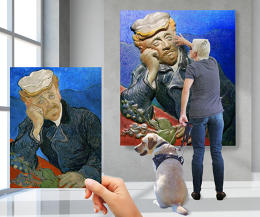
3-D printing can bring figurative paintings to life, but abstract work and shades of color are harder to translate into a tactile piece. Unseen Art ran into the issue while printing the Mona Lisa. “Thinking about the light and the coloring, there was a lot of discussion about whether we could heat up one side of the painting to give it a light and shadow kind of feel,” says Niskanen. “There are many options for different materials, too, and we are playing with it, but it’s not the exact painting. It’s an interpretation of it. You’ll never get the same experience, but we’re hoping to move toward it.”
For her part, Jackson hopes that art appreciation for the blind doesn’t end with portraits and realistic images, although she understands that some of the subtleties and, of course, colors would be lost. As a fan of Jackson Pollock, she hopes the innovators persevere. “You would get a sense of the shapes and feel and movement of it,” says Jackson. “If I could feel that, I would get a sense of the movement of that painting, even though there’s no specific picture or shape. Feeling it would give me a sense of what you’re seeing. You know it’s splashed all the way across the canvas, but unless I can feel it, I don’t know that.”
A group called 3D Photoworks created a hands-on version of Leonardo Da Vinci’s Mona Lisa.
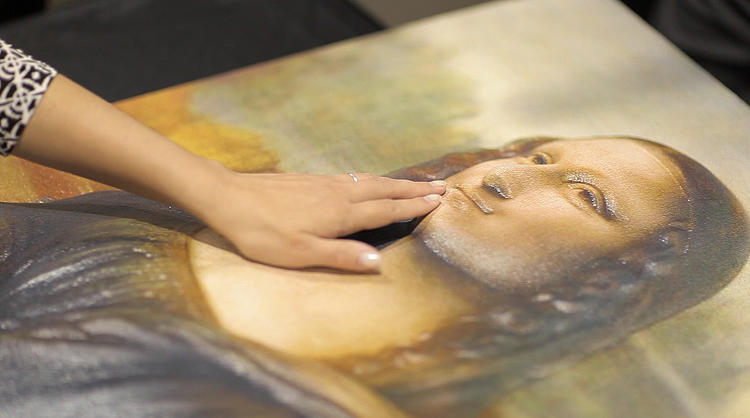
3DPhotoworks, meanwhile, has created a 3-D version of Emanuel Leutze’s Washington Crossing the Delaware.
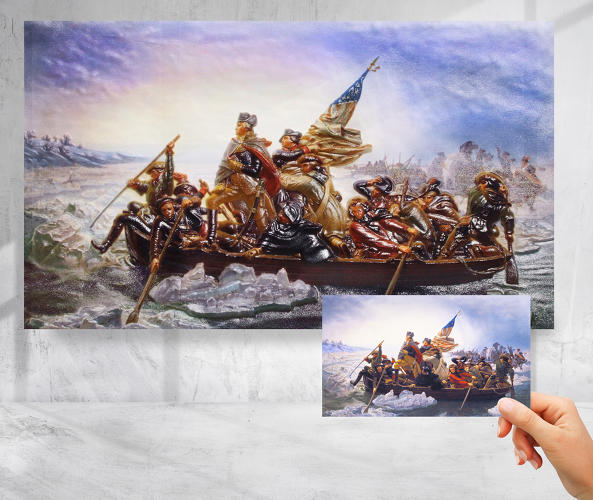
The ability to “see” with one’s hands—a concept generally known as sensory substitution—is well proven at this point.

The Canadian Museum of Human Rights is hosting an exhibit of a specially developed collection of paintings made to be enjoyed through touch.

The photographs and artwork were created by 3DPhotoworks using a proprietary process that builds three-dimensional artwork embedded with sensors.
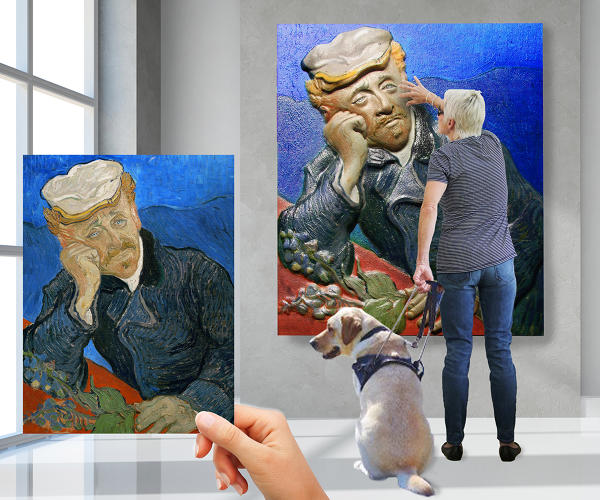
While sculpture can be appreciated by touch, paintings, photography, and prints are traditionally harder to translate for the visually impaired.

3-D printing can bring figurative paintings to life, but abstract work and shades of color are harder to translate into a tactile piece.
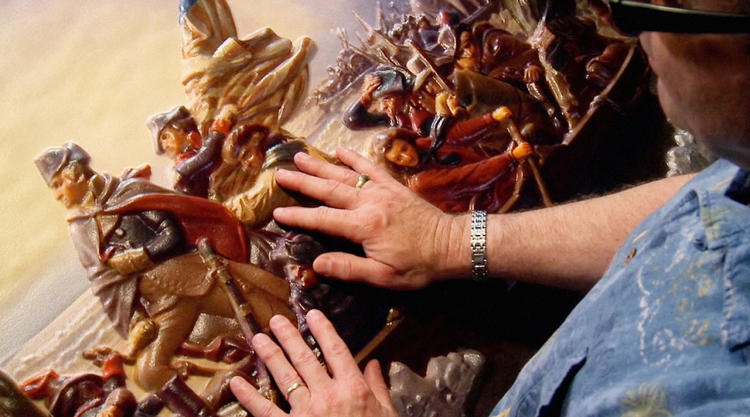
Fast Company , Read Full Story
(20)

